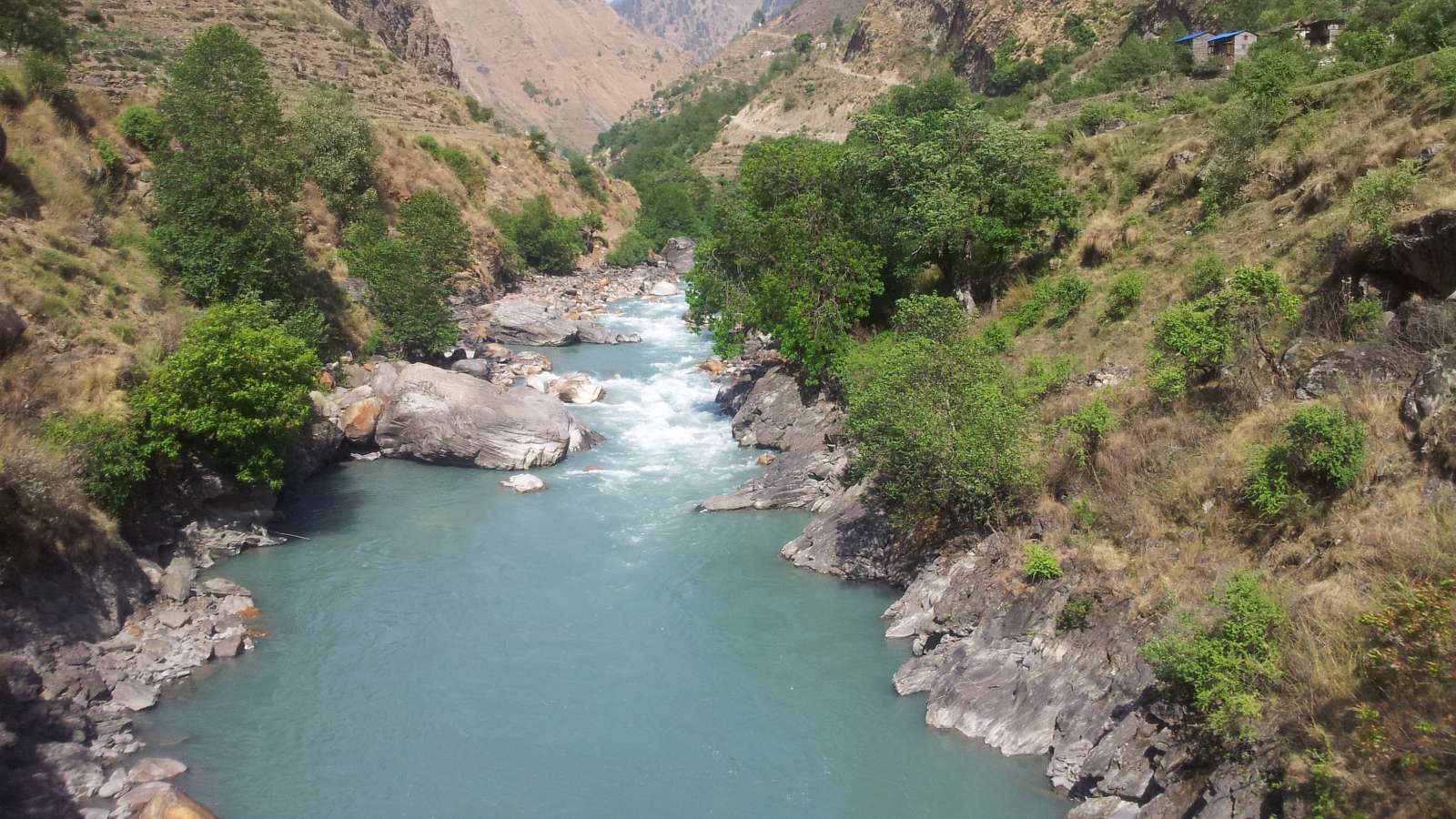Upper Mugu Karnali Hydropower Project is a proposed 240 MW daily peaking run-of-river scheme located in Karnali Province, northwest Nepal. The project is being developed by Elevate Energy Pvt. Ltd., with Lahmeyer International GmbH engaged as the consultant for engineering and environmental design.
The project area is situated in a rain-shadow region with an average annual rainfall of only 450 mm. The river catchment at headworks is 4,478 km2, with average monthly discharges ranging from 16 m3/s in winter to 174 m3/s in August. Long-term sediment yield has been estimated at 1.71 million tonnes per year, which is relatively low compared to other Himalayan rivers. Geological investigations identified psammitic schist, banded gneiss, and augen gneiss as the dominant rock units, with favourable tunnelling conditions. Seismic hazard analysis indicates peak ground accelerations of 0.15g for the operating basis earthquake and 0.51g for the safety evaluation earthquake.
Environmentally, the project has assumed an ecological flow of ten percent of monthly average discharge, though final assessments are pending. Surveys confirmed the presence of snow trout species including Schizothorax richardsonii, classified as vulnerable, and the inclusion of a fish ladder is recommended. Glacier lake outburst flood risks are considered moderate, with one potentially dangerous lake identified 55 km upstream.
The project scheme involves a 43.5 m high concrete gravity dam with a live storage volume of 1.04 million m3, enabling daily peaking. Water will be diverted through a four-bay intake to an underground four-basin desander, conveyed via an 11 km headrace tunnel, and directed through a vertical pressure shaft into an underground powerhouse. Two Francis turbines will generate up to 191.4 MW under a net head of 316 m, with power evacuated through two short 132 kV lines to the project switchyard and onwards by a 220 kV line to the Mugu Hub at Tumcha, about 38 km away. Optimisation studies recommended a design discharge of 70 m3/s, allowing for over four hours of peaking operation during the dry season.
Average annual energy generation is estimated at 989 GWh, with 30 percent generated in the dry season and 70 percent in the wet season. Project revenues are based on the Nepal Electricity Authority’s current tariff framework, which sets dry peak tariffs at NPR 10.55 per kWh, dry off-peak at NPR 8.40 per kWh, and wet season tariffs at NPR 4.80 per kWh. With tariff escalation applied for the first eight years of operation, revenues are projected at NPR 6,092 million in the first year, increasing to about NPR 7,554 million by year nine.
The total project cost is estimated at USD 223.2 million, including USD 209.6 million in construction and USD 13.6 million in other costs, along with USD 18.8 million allocated for the 220 kV transmission line to Tumcha. Construction is scheduled to begin in 2029, subject to permits, environmental approvals, and financing, with a construction period of four to five years. Economic analysis shows very strong results, with an ENPV of NPR 103,767 million, an EIRR of 38 percent, and a benefit-cost ratio of 3.39. Financially, the project is viable with a post-tax IRR of 13.3 percent, comfortably above the weighted average cost of capital of 7.9 percent, and a unit cost of NPR 4.61 per kWh (USD 0.029/kWh).
Despite the attractive fundamentals, project revenues are constrained by frozen NEA tariffs, which have remained unchanged since 2012, apart from limited escalation during the first eight years of operation. Rising operating costs and the depreciation of the Nepalese Rupee against the US Dollar—22 percent between 2017 and 2024—further erode profitability. Tariff adjustments to reflect inflation and currency depreciation would significantly strengthen the financial performance and better capture the economic value of electricity in Nepal.
In conclusion, the updated feasibility study demonstrates that the Upper Mugu Karnali Hydropower Project is technically feasible, environmentally manageable, and financially attractive.
